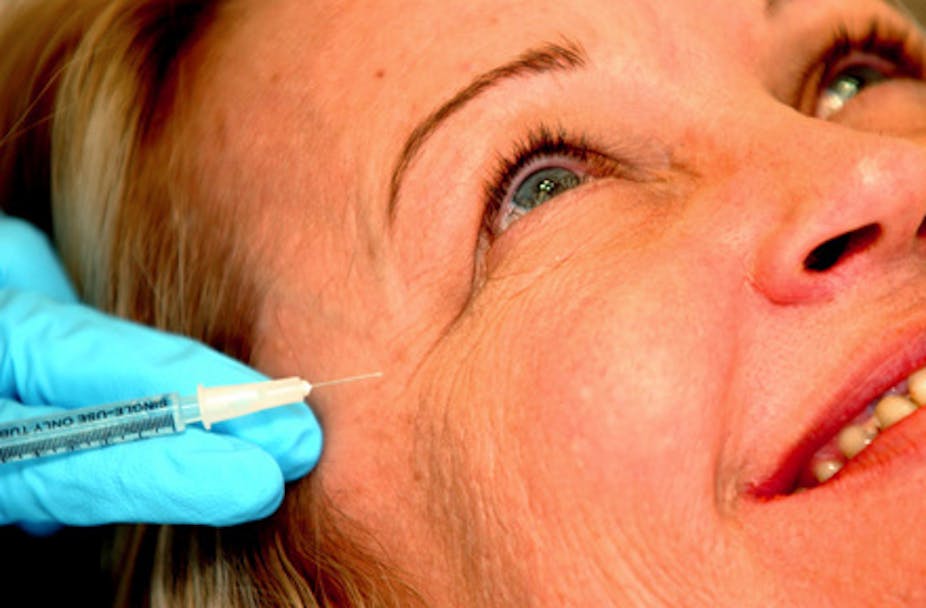In the course of researching two books about cosmetic surgery, the most shocking truth I have discovered is how uncontroversial or “normal” it has become.
Over the last decade, I’ve interviewed many people about why they have opted to physically change their appearance. For some, the decision is complex and emotional while for others, it is simply a part of good grooming.
Reasons for cosmetic surgery can be deeply psychological. One woman was desperate to remove the two vertical lines between her eyebrows because they reminded her of her mother’s face when she was angry.
Another had her lower face tightened so she didn’t develop jowls like her father, who had abused her.
One even found herself feeling slightly jealous of her sixteen-year-old daughter’s beautiful newly-grown breasts, and this prompted her to have the implants she had been thinking about for years.
These may seem like extreme ways to deal with deep psychological anxieties about family relations and growing older but all three women insisted their cosmetic surgery made them feel better about themselves and their place in the world.
Little wonder then that cosmetic surgery has jokingly been called “psychiatry with a scalpel.”
Cosmetic surgery can be a way to mark important life transitions. It is often linked to divorce, or turning forty or fifty or sixty.
For one of my interviewees, it was related to recovery from addiction and trying to regain some of the years he had lost to drugs and alcohol.
However, increasingly, people see cosmetic surgery as simply part of the beauty treatment spectrum.
It is connected to fashion and good grooming: liposuction and regular botox injections are seen as not very different from visits to the hairdresser.
These people see no need to justify it in terms of medical or psychological necessity. They are part of what I call the “new normal.”
Australia doesn’t maintain reliable statistics about cosmetic surgery, and a recent press release from the Australasian College of Cosmetic Surgery was widely mis-read as saying that we spend $1 billion annually on cosmetic surgery.
In actual fact, this rather ambitious estimate includes the multi-million dollar anti-ageing product industry.
Nevertheless, cosmetic surgery does seem to be rising steadily with reports of growth of about 10% a year.
“Non-surgical” cosmetic surgery procedures are the fastest growing. Botox, fillers and laser treatments are cheaper than traditional surgery, can be performed without anaesthetic and often don’t even require a qualified doctor.
Popping out for some in your lunch hour isn’t quite feasible yet due to bruising, redness and sometimes bleeding, but these are certainly in-out procedures.
This means that cosmetic surgery is more accessible than it was a decade ago, more a part of our everyday lives, and more likely to be seen as “normal.”
Ten years ago it was still unusual for people over forty to be wrinkle-free: now there is barely a face over thirty in the public eye that hasn’t been altered in some way.
And we learn about the “new normal” from how cosmetic surgery is depicted in the media.
While Michael Jackson had too much cosmetic surgery and Kylie Minogue may have overdone it, nobody seems to care about Hilary Clinton’s, and the increasingly smooth, plumped-out faces of most Australian women newsreaders go uncommented upon.
In fact, our media seem to have a schizophrenic relationship with cosmetic surgery, condemning some while celebrating or ignoring others.
This complex love/hate relationship between the media and cosmetic surgery helps to define the new normal.
It is only in relation to “too much” or “grotesque” cosmetic surgery that lesser kinds of cosmetic surgery come to be seen as acceptable and even uninteresting.
Without people like Jackson — and even Kylie — the “new normal” faces of the newsreaders who join us in our living rooms each evening would be, quite simply, monstrous.

